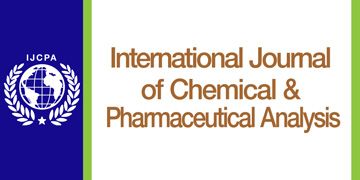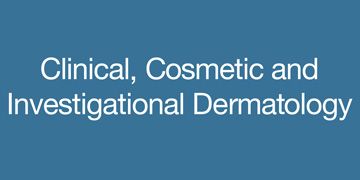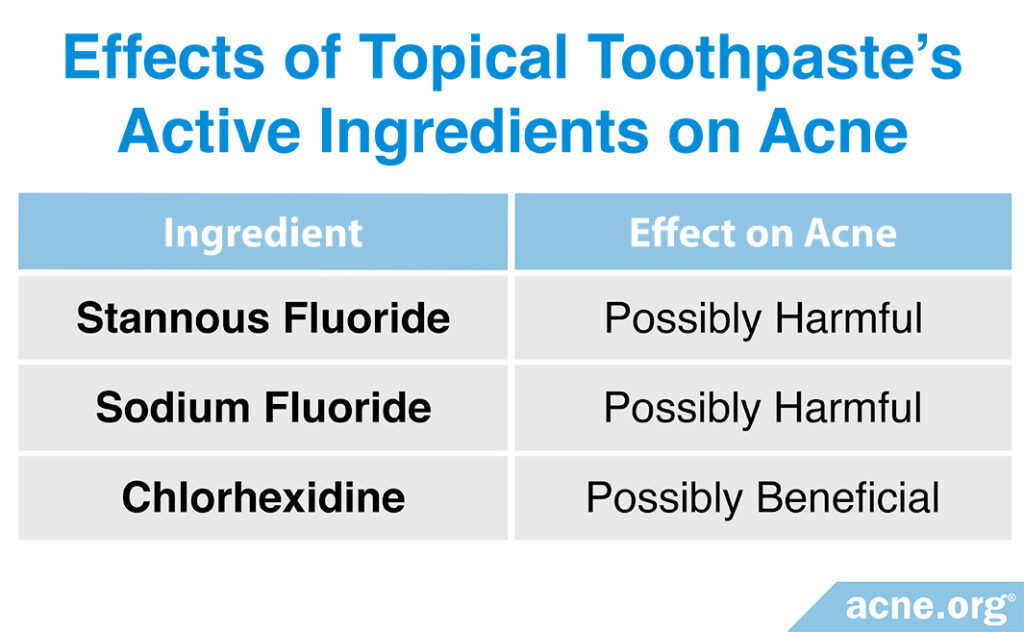Probably Not, and Fluoride-Containing Toothpaste in Particular May Be Irritating

The Essential Info
Toothpaste applied to the skin is a commonly attempted spot treatment for acne, but its use is mainly due to folklore and is not based on science. In fact, the vast majority of toothpastes contain a potentially irritating ingredient, fluoride, and thus might provoke more irritation and lead to more acne, not less.
Even if a toothpaste does not contain fluoride, different brands and varieties of toothpaste vary greatly in composition, based on the country of production and intended use (whitening, tartar control, etc.), so determining whether a particular toothpaste might help or hurt when it comes to spot treating acne is difficult.
Lastly, since there are no well-designed scientific studies evaluating the effectiveness of various toothpaste products in the treatment of acne, we cannot say whether toothpaste helps at all, or for that matter, whether it might hurt.
My Verdict: Avoid. I’m pretty confident in this verdict because I couldn’t stop when it came to researching this topic. I turned over every stone and looked in every nook and cranny. I wanted to make sure I wasn’t overlooking something that might show that toothpaste would actually work, but I never found it. If you’re looking for a really cheap at-home spot treatment that has a good chance of actually working, put a piece of ice in a Ziploc®-type bag and hold it on an emerging pimple for 5 minutes, twice a day (or more if you want, but leave 2 hours between each application of ice).

The Science
- Studies on the Effect of Toothpaste on Acne
- What Ingredients Does Toothpaste Typically Contain?
- Can Inactive Ingredients in Toothpaste Be Useful as Acne Treatments?
- Could the Active Ingredients in Toothpaste Improve Acne?
- Are There Any Ingredients in Specialty Toothpaste That Could Help Fight Acne?
- Is Tooth Gel Better than Toothpaste in Acne Treatment?
- The Bottom Line
A brief search on the internet reveals that many people use toothpaste as a home remedy for acne. Of course, toothpaste is intended for dental hygiene and is not marketed or intentionally designed as an acne treatment. But toothpaste contains a large number of substances, and it is possible that one or more of these ingredients have a beneficial effect for acne sufferers. On the flip side, there commonly are ingredients in toothpaste that can be irritating to the skin and potentially detrimental to acne.
Let’s take a deep scientific dive into this question and answer it as best as we can once and for all.
Studies on the Effect of Toothpaste on Acne
There is only one study ever performed on toothpaste and acne, published in 2014 in the International Journal of Chemical and Pharmaceutical Analysis. However, this study doesn’t give us much to go on because it did not use toothpaste on pimples themselves. Instead, it looked at whether various toothpaste brands could limit the growth of bacteria, including acne bacteria. Results were mixed and inconclusive.

A small sample size of 10 volunteers with acne were used – 5 males and 5 females. The scientists swabbed the faces of the volunteers, collecting bacteria and grew the bacteria in a petri dish in the lab. These bacteria included the bacteria associated with acne, called C. acnes.
The scientists then applied to the bacteria toothpaste from various brands. They reported that the Colgate® and Close-Up® brands limited the growth of both acne bacteria (C. acnes) and another bacterium called S. aureus.
However, when the researchers applied these toothpastes directly to the volunteers’ skin, there was immediate irritation. Since skin irritation can make acne worse, this is a concern.
Three other toothpaste brands, Pepsodent®, Miswak®, and Colgate Visible White®, were not effective against these bacteria.
I told you we were going to take a deep dive into the science right? Ok, so let’s be thorough. Aside from not directly studying toothpaste on acne, this study is not ideal for several other reasons:
- There was no reasoning as to which ingredient in the toothpastes produced the antibacterial effect.
- The researchers did not use a large sample size. In fact, they had only 10 subjects.
- There was no detail on the volunteers’ ages.
These factors make the experiment neither reliable nor reproducible. In other words, until more studies are performed that control variables, use a larger sample size, and use toothpaste directly on acne, we will still be in the dark regarding direct evidence of toothpaste on people with acne.
So where does that leave us then? Instead of looking at direct evidence, we will have to look at the ingredients that toothpaste typically contains and see if these ingredients might have a positive or negative effect on acne.
What Ingredients Does Toothpaste Typically Contain?
Ingredients in toothpaste can be grouped into the two categories:
- Inactive ingredients: Make up about 98% of toothpaste
- Active ingredients: Make up the other 2%
Inactive ingredients

Inactive ingredients are included in toothpaste for various purposes, such as:
- To make the toothpaste abrasive, for better scrubbing of the teeth
- To keep the toothpaste from drying out
- To cause the toothpaste to foam during use
- To sweeten the toothpaste or add flavor2
Active ingredients

Active ingredients are the compounds that strengthen teeth and prevent cavities.
The active ingredients in toothpaste almost always are some form of fluoride. In toothpaste sold in the United States, this usually is stannous fluoride. In other parts of the world, toothpaste may include sodium fluoride or chlorhexidine as active ingredient.2,3 Stannous fluoride and sodium fluoride essentially are the same. The fluoride ion in each is what protects teeth. Chlorhexidine, conversely, is antibacterial, killing harmful bacteria in the mouth.
Ok, so now that we know the inactive and active ingredients in most toothpastes, let’s look at how these ingredients might affect acne, starting with the inactive ingredients.
Can Inactive Ingredients in Toothpaste Be Useful as Acne Treatments?

Abrasives
Abrasives are mechanical agents used to create friction with scrubbing–think of sandpaper or steel wool. In toothpaste, abrasives help to scrub food particles and stains off the teeth.
Common abrasives in toothpastes are:
- Calcium-based abrasives, such as calcium carbonate or dicalcium phosphate dihydrate. These abrasives contain calcium. There are no studies that address the effects of calcium carbonate and dicalcium phosphate dihydrate on acne. However, we do know that high amounts of calcium can cause skin cells to grow and divide at faster rates than they usually do.4 Why does this matter? Because this rapid generation of skin cells may clog pores, which could lead to acne. In other words, calcium compounds are at best not a factor when it comes to acne, and at worst, could lead to more acne. The amount of calcium in most toothpaste, in the form of calcium carbonate and dicalcium phosphate dihydrate, would be theoretically sufficient to stimulate skin cell regeneration. However, we have no studies to prove this effect of toothpaste application to the skin.
The verdict: Possibly bad for acne - Silica, which is another term for silicon dioxide, a compound found in nature as quartz stone. As a hard and rough material, silica makes for a good abrasive.2 Some researchers state that silica has “a positive effect on [the] skin surface” by stimulating collagen, which can reduce the appearance of wrinkles.5,6 Collagen is the main structural protein in our bodies and “holds together” many of our organs, including the skin. Again, there are no studies to determine whether the silica in toothpaste treats acne or not, and “a positive effect on [the] skin surface” is nebulous and has nothing to do with acne.
The verdict: Probably won’t hurt but most likely won’t help
Humectants
Humectants are water-retaining compounds. Manufacturers add humectants to toothpaste in order to keep it from drying out.
Glycerol, a common humectant in toothpaste, causes skin cells to mature faster. This quickens skin renewal.7 Since fast skin renewal helps pores from becoming clogged, toothpaste that contains glycerol is potentially therapeutic for acne in this regard. However, there is no clinical research to support this idea.
Since glycerol absorbs moisture, it dries out the skin where applied. Some people who apply toothpaste to the skin as an acne treatment report that it dries out their acne lesions. The glycerol in the toothpaste likely is the reason for this effect. However, from what we know about acne, overly dry skin is more acne-prone. Some anecdotal reports say drying out a pimple might help, but the science does not back this up.
The verdict: Slight chance it may help to a very small degree
Detergents
Detergents cause toothpaste to foam while brushing the teeth. Sodium lauryl sulfate (SLS) is the most commonly used detergent in toothpaste. It can cause skin irritation, and since skin irritation worsens acne, it is wise to avoid products containing SLS if you are prone to acne. In fact, SLS has been shown to be comedogenic (pore clogging) in scientific studies. However, SLS also kills bacteria, so it may inhibit C. acnes growth. This is uncertain, however, since there are no studies of the effects of SLS on acne.2,8,9
The verdict: Probably bad for acne
Flavors
Flavors are present in toothpaste in order to make the product more appealing to consumers. Although spearmint and wintergreen are the most common flavors, some toothpaste contains cinnamon, lemon, eucalyptus, aniseed (licorice), and other flavors. These flavors often come from essential oils, which are concentrated aroma compounds from plants.2 Many essential oils can kill or prevent the growth of bacteria, including C. acnes.10
On the other hand, cinnamon and mint-based flavors such as spearmint, peppermint, and menthol are the toothpaste ingredients most likely to cause an allergic reaction.11,12
The verdict: Possibly good for acne
Here’s a quick summary of the inactive ingredients in toothpaste and whether they may be beneficial or harmful:

Could the Active Ingredients in Toothpaste Improve Acne?

Let’s have a look at them one by one, but overall we can sum it up like this: Sodium fluoride and stannous fluoride might cause or worsen acne, while chlorhexidine may be beneficial.
Sodium fluoride
Sodium fluoride protects teeth in the same manner as stannous fluoride, and the two exhibit identical chemical properties. Some doctors report suspicions that fluoride irritates skin, and two studies have linked fluoride to inflammation and irritation. Since acne is an inflammatory disease, any substance causing skin inflammation, such as perhaps fluoride, would be detrimental when applied to acne. In fact, an inflammatory substance placed on the skin could even cause acne. And irritation of any kind can also make acne worse.
The verdict: Probably bad for acne
Expand to read details of studies

A paper appearing in 2013 in the Australian Dental Journal details the case of a 45-year-old woman who went to her dermatologist with perioral dermatitis, which is skin inflammation around the mouth. The woman had been using prescription toothpaste with a high concentration of sodium fluoride in order to prevent cavities. When she substituted it for a toothpaste with a normal amount of sodium fluoride, her skin inflammation improved. Then, the inflammation worsened when she switched back to the high-fluoride toothpaste.
The researchers suspected that fluoride was the cause of the patient’s skin inflammation because the amount of fluoride in the toothpaste was the only factor that changed when her inflammation improved. However, the researchers could not prove that there was not another cause of the inflammation. In the same paper, the writers related another story of “worsened acne” in a patient working with hydrogen fluoride in a stained-glass factory. The patient’s acneiform eruption cleared after a change of employment and recurred on resuming her previous job.”13

There was another case of fluoride toothpaste linked to skin irritation published in 1976 in JAMA Dermatology. The patient was a 63-year-old woman who also developed perioral dermatitis. Despite treatment with several medications available at the time, her skin irritation persisted for two years until her doctors substituted a non-fluoride toothpaste. After that, her dermatitis resolved in two weeks. The paper’s authors noted that the woman “remained free of dermatitis until the present time with no other therapy.”14
Stannous fluoride
One animal study points toward stannous fluoride as also being irritating, and thus, detrimental to acne. Note: Acne.org does not condone testing on animals.
The verdict: Probably bad for acne
Expand to read details of study

In a study published in 1968 in Toxicology and Applied Pharmacology, researchers shallowly nicked the abdomens of eight rabbits and left eight other rabbits uncut. They then applied stannous fluoride at different concentrations to the rabbits’ abdomens. After 18 hours, the researchers noted that the nicked rabbits had pimples form around the cuts, but the uncut rabbits appeared unaffected by the stannous fluoride.15 Based on the results of this experiment, it is possible that the stannous fluoride caused an allergic reaction in the cut rabbits. As the researchers wrote, “We do not feel that a simple toxic reaction is occurring.”15 At the least, the stannous fluoride irritated the rabbits’ skin, and it is well accepted that skin irritation leads to acne.
Chlorhexidine
While it most likely is not a good idea to apply fluoride to acne-prone skin, chlorhexidine is an active ingredient in some toothpaste that could be useful as acne treatment. This is because chlorhexidine is antimicrobial, meaning it kills bacteria. Acne bacteria, called C. acnes, often is associated with acne, so chlorhexidine may be beneficial in this regard. One animal study points toward chlorhexidine potentially reducing clogged pores in rabbit ear skin.
Expand to read details of study

In a paper published in 2012 in Clinical, Cosmetic and Investigational Dermatology, scientists related an experiment they performed on rabbits’ ears that had comedones (clogged pores). They used rabbit ears because rabbit ear skin is similar to human skin. The scientists applied chlorhexidine ointment to the rabbits’ ears once a day for 18 days. They also had a control group of rabbits, not treated with chlorhexidine. The rabbits that received the chlorhexidine ointment showed no new comedones and even showed a decrease in the size of the comedones that were present already.16 This experiment shows that chlorhexidine may reduce comedones, which often develop into acne.
Also, chlorhexidine is proven to kill bacteria. However, it is important to note that the researchers used a chlorhexidine ointment, not toothpaste, so we cannot be certain of the effects of chlorhexidine-containing toothpaste on acne.
The verdict: Possibly good for acne
Here’s a quick summary of the active ingredients in toothpaste and whether they may be beneficial or harmful:

As we can see up to this point, the evidence is not at all impressive that toothpaste could help with spot treating an acne pimple when it arises. In fact, most of the research that we have on the common ingredients in toothpaste seem to show that it could do more harm than good. Now let’s delve even deeper and look at ingredients in specialty toothpastes to see if there are any outliers that could help.
Are There Any Ingredients in Specialty Toothpaste That Could Help Fight Acne?
There are some ingredients included in several types of specialty toothpaste that could be useful for treating acne. Specialty toothpaste-products are formulations intended to help with specific oral health issues. They include products such as:
- Whitening toothpaste
- Anti-gingivitis toothpaste
- Anti-sensitivity toothpaste
- Baking soda toothpaste
Whitening toothpaste
One of the active ingredients in whitening toothpaste is hydrogen peroxide.17 Hydrogen peroxide is similar to another form of peroxide that works well on acne, benzoyl peroxide. Benzoyl peroxide has been used for many years as an acne treatment for several reasons. It kills acne bacteria extremely well, reduces the excretion rate of sebum (skin oil), which can contribute to acne, and may also reduce inflammation.18
Because benzoyl peroxide and hydrogen peroxide are similar, it is possible that hydrogen peroxide is as effective against acne. A study published in 2013 in the Journal of Cosmetic Science studied the effects of hydrogen peroxide applied to the skin of acne patients and suggests it may be an effective acne treatment.

Scientists applied benzoyl peroxide to some of the acne lesions of ten female volunteers between the ages of 18 and 50 years, and they applied glucose oxidase, which turns into hydrogen peroxide on the skin, to other lesions. They applied both substances twice per day. More lesions deliberately were left untreated as a control group.19 The glucose oxidase and benzoyl peroxide treatments were significantly more effective in reducing the size of both inflammatory and non-inflammatory acne lesions than the control group,19 which suggests that hydrogen peroxide is an effective acne treatment.
The verdict: Since most whitening toothpaste uses hydrogen peroxide, and hydrogen peroxide shows promise in acne treatment, it is possible that whitening toothpaste proves more beneficial for acne than the non-whitening variety.
Anti-gingivitis toothpaste
Gingivitis is inflammation of the gums and usually is caused by bacteria. Anti-gingivitis toothpaste contains anti-bacterial agents such as chlorhexidine and triclosan. These agents kill bacteria and help to prevent and reduce gingivitis.20 In addition, triclosan may reduce inflammation when applied topically.21 We have already seen that chlorhexidine may be beneficial when it comes to acne. When it comes to triclosan, we have one study that used triclosan on acne patients, published in 1978 in the Journal of International Medical Research, and results were promising.

They applied cream to the skin of 72 male acne patients between the ages of 18 and 22 years. The cream contained 0.1% triclosan, and there also was a control group, which received no treatment. The researchers noticed a significant improvement in the acne patients treated with the triclosan cream. These patients experienced a reduction of 21 – 22% in their non-inflammatory lesions, and their inflammatory lesions diminished by 43 – 44%.22
Of course, the study did not use toothpaste. However, toothpaste that contains triclosan normally contains up to 0.3% triclosan, so it makes sense that the triclosan included in toothpaste is at least partially effective against acne.
The verdict: Anti-gingivitis toothpaste may be more beneficial for acne than regular toothpaste.
Anti-sensitivity toothpaste
Manufacturers include potassium in anti-sensitivity toothpaste. The potassium lessens nerve pain in the teeth, providing a mild numbing effect.
“Iodine” at drugstores that people use for scrapes on the skin is actually potassium iodide. Studies that included potassium iodide reported acne as a side effect. In these studies, it is not clear if the potassium or the iodine caused the acne.20 However, from the very limited evidence we have, it may be a good idea for acne-prone people to avoid applying toothpaste that contains potassium to their skin.
The verdict: Anti-sensitivity toothpaste may be more harmful than regular toothpaste.
Baking soda toothpaste

Baking soda is included in specialty toothpaste to act as an abrasive to help scrub away plaque and as a whitening agent to remove stains. While baking soda may exhibit mild antibacterial and exfoliating properties, there is no evidence on its effects, let alone on acne.
The verdict: Baking soda toothpaste is probably similar to regular toothpaste when it comes to acne.
Now that we’ve gone through common ingredients in regular toothpaste as well as specialty toothpaste, now let’s tackle the question of whether tooth gel or toothpaste is better when it comes to potentially being used as an acne spot treatment.
Is Tooth Gel Better than Toothpaste in Acne Treatment?
The ingredients in tooth gel and toothpaste largely are the same, so we cannot say that one is better than the other for acne treatment when it comes to ingredients. However, texture is one important difference. Tooth gel is more easily spreadable, so it can be applied to the skin more gently than toothpaste. This is relevant because physical irritation worsens acne. For this reason, if experimenting with tooth products for acne, tooth gel is a better choice.
The verdict: Tooth gels are probably a better choice than toothpastes.
The Bottom Line

Most toothpaste actually might be harmful when applied to acne because most in the US contains fluoride, which might inflame and irritate the skin. However, some toothpaste contains no fluoride, and there are some individual toothpaste ingredients that might help a bit. But it’s a big toss up, and probably not worth even trying. My suggestion is that we leave toothpaste in the dust heap of history when it comes to at-home acne spot treatments.
References
- Dharmik, P. & Gomashe, A. Anti-Acne Activity of Toothpaste – An Emerging Pimple Treatment. Int J Chem Pharm Anal 1, 149 – 153 (2014). https://www.academia.edu/35129130/Anti-Acne_Activity_of_Toothpaste_An_Emerging_Pimple_Treatment
- Forward, G. C., James, A. H., Barnett, P. & Jackson, R. J. Gum health product formulations: what is in them and why? Periodontol 2000 15, 32 – 39 (1997). https://www.ncbi.nlm.nih.gov/pubmed/9643230
- Morbidelli, A. & Gomes, R. Toothpaste. 1 – 12 (2016).
- Bikle, D. D., Xie, Z. & Tu, C. L. Calcium regulation of keratinocyte differentiation. Expert Rev Endocrinol Metab 7, 461 – 472 (2013). https://www.ncbi.nlm.nih.gov/pubmed/23144648
- Laane, H. M. SILICON IN HUMANS: BENEFICIAL OR ESSENTIAL? https://pdfs.semanticscholar.org/4252/095b8eadf3cb96fb22c0149c6141ff14e983.pdf
- Advincula de Araújo, L. & Flavia, A. Use of silicon for skin and hair care: an approach of chemical forms available and efficacy. An Bras Dermatol 91 (2016). https://www.ncbi.nlm.nih.gov/pmc/articles/PMC4938278/
- Songkro, S. An overview of skin penetration enhancers: Penetration enhancing activity, skin irritation potential and mechanism of action. Songklanakarin J Sci Technol 31, 299 – 321 (2009). https://doaj.org/article/2dc36664da87495fbb028ef335e9d3c4
- Gimba, C. E., Abechi, S. E. & Elizabeth, O. Investigations of Sodium Lauryl Sulphate and Saccharin Concentrations in Brands of Toothpaste. Res J Chem Sci 4, 58 – 61 (2014). http://isca.me/rjcs/Archives/v4/i6/10.ISCA-RJCS-2014-75.php
- Draelos, Z., Hornby, S., Walters, R. M. & Appa, Y. Hydrophobically modified polymers can minimize skin irritation potential caused by surfactant-based cleansers. J Cosmet Dermatol 12, 314 – 21 (2013). https://www.ncbi.nlm.nih.gov/pubmed/24305430
- Zu, Y. et al. Activities of ten essential oils towards Propionibacterium acnes and PC-3, A-549 and MCF-7 cancer cells. Molecules 15, 3200 – 3210 (2010). https://www.ncbi.nlm.nih.gov/pubmed/20657472
- Francalanci, S., Sertoli, A., Giorgini, S., Pigatto, P., Santucci, B. & Valsecchi, R. Multicentre study of allergic contact cheilitis from toothpastes. Contact Dermatitis 43, 216-222 (2000). https://pubmed.ncbi.nlm.nih.gov/11011921/
- Zirwas, M. J. & Otto, S. Toothpaste allergy diagnosis and management. J Clin Aesthet Dermatol 3, 42-47 (2010). https://pubmed.ncbi.nlm.nih.gov/20725569/
- Peters, P. & Drummond, C. Perioral dermatitis from high fluoride dentifrice: a case report and review of literature. Aust Dent J 58, 371 – 372 (2013). https://www.ncbi.nlm.nih.gov/pubmed/23981221
- Mellette, J. R., Aeling, J. L. & Nuss, D. D. Fluoride Tooth Paste: A Cause of Perioral Dermatitis. JAMA Dermatol 112, 730 – 31 (1976). https://www.ncbi.nlm.nih.gov/pubmed/1275533
- Stone, O. J. & Willis, C. J. The effect of stannous fluoride and stannous chloride on inflammation. Toxicol Appl Phamacol 338, 332 – 338 (1968). https://www.ncbi.nlm.nih.gov/pubmed/5726662
- Yamakoshi, T. et al. Efficacy of chlorhexidine gluconate ointment (Oronine H(®)) for experimentally-induced comedones. Clin Cosmet Investig Dermatol 5, 79 – 83 (2012). https://www.ncbi.nlm.nih.gov/pubmed/22936850
- The scientific committee. HYDROGEN (CARBAMIDE, ZINC) PEROXIDE IN TOOTH BLEACHING / WHITENING PRODUCTS. Evaluation (2002). https://www.semanticscholar.org/paper/HYDROGEN-(CARBAMIDE%2C-ZINC)-PEROXIDE-IN-TOOTH-%2F/c4e0c2ab6c8647619d9176dc15e7f876acd9a047
- Kircik, L. H. The role of benzoyl peroxide in the new treatment paradigm for acne. J Drugs Dermatol 12, s73 – 4 (2013). https://www.ncbi.nlm.nih.gov/pubmed/23839205
- Muizzuddin, N., Schnittger, S., Maher, W., Maes, D. H. & Mammone, T. Enzymatically generated hydrogen peroxide reduces the number of acne lesions in acne vulgaris. J Cosmet Sci 64, 1 – 8 (2013). https://www.ncbi.nlm.nih.gov/pubmed/23449126
- Maldupa, I., Brinkmane, A., Rendeniece, I. & Mihailova, A. Evidence based toothpaste classification, according to certain characteristics of their chemical composition. Stomatol Balt Dent Maxillofac J 14, 12 – 22 (2012). https://www.ncbi.nlm.nih.gov/pubmed/22617330
- Wallet, M. A. et al. Triclosan Alters Anti-microbial and Inflammatory Responses of Epithelial Cells. Oral Dis 19, 296 – 302 (2013). https://www.ncbi.nlm.nih.gov/pubmed/24079913
- Franz, E. The Effectiveness of Topical Antibacterials in Acne: A Double-Blind Clinical Study. J Int Med Res 6, 72 – 77 (1978). https://www.ncbi.nlm.nih.gov/pubmed/146628
 Acne.org Products
Acne.org Products